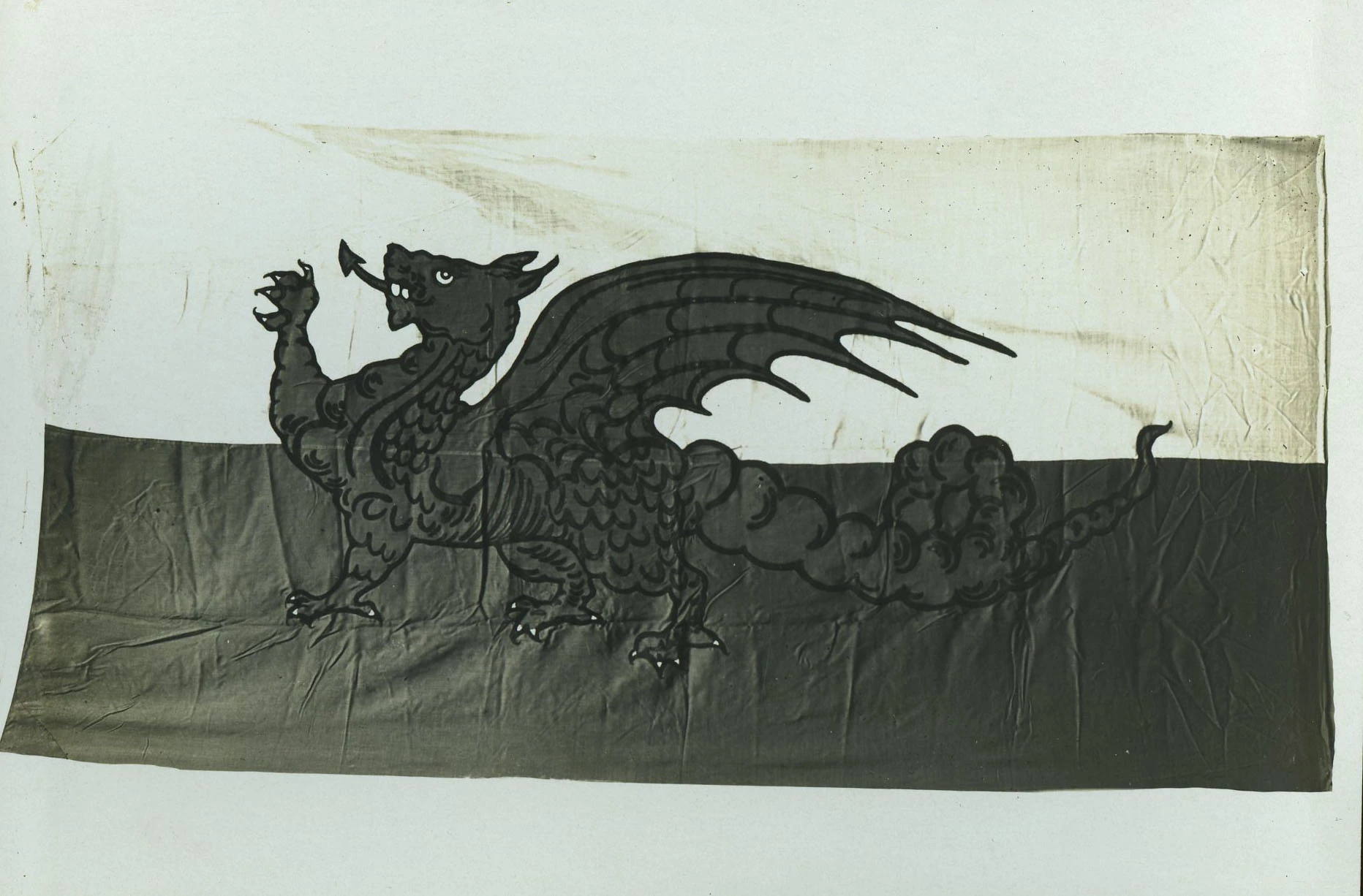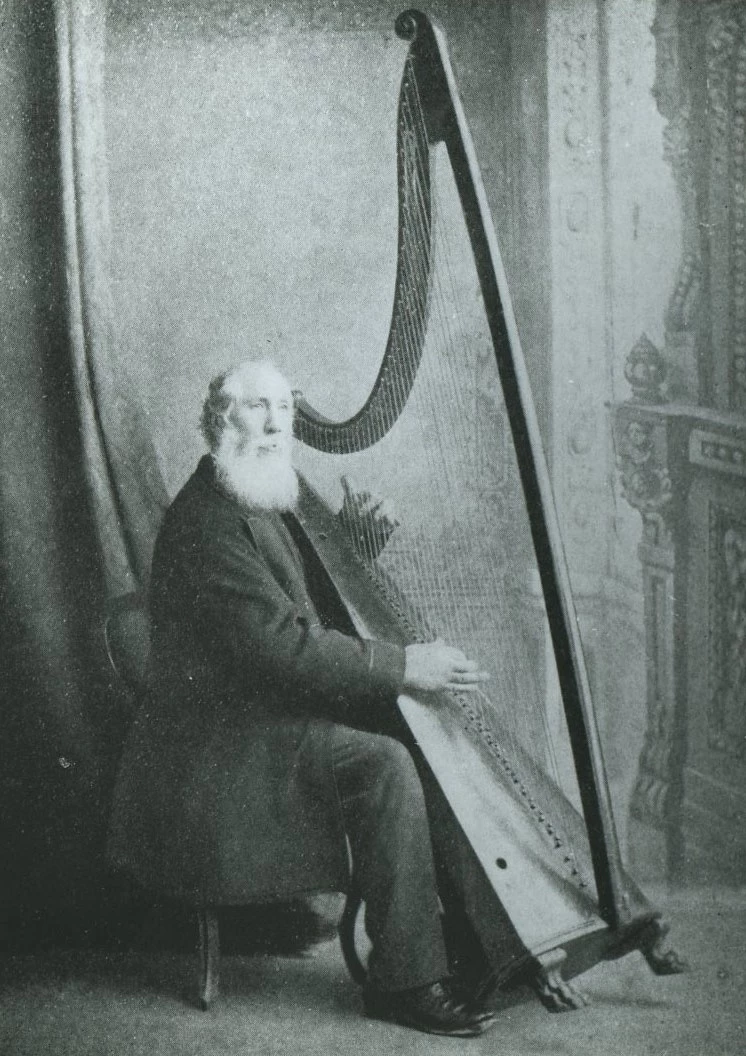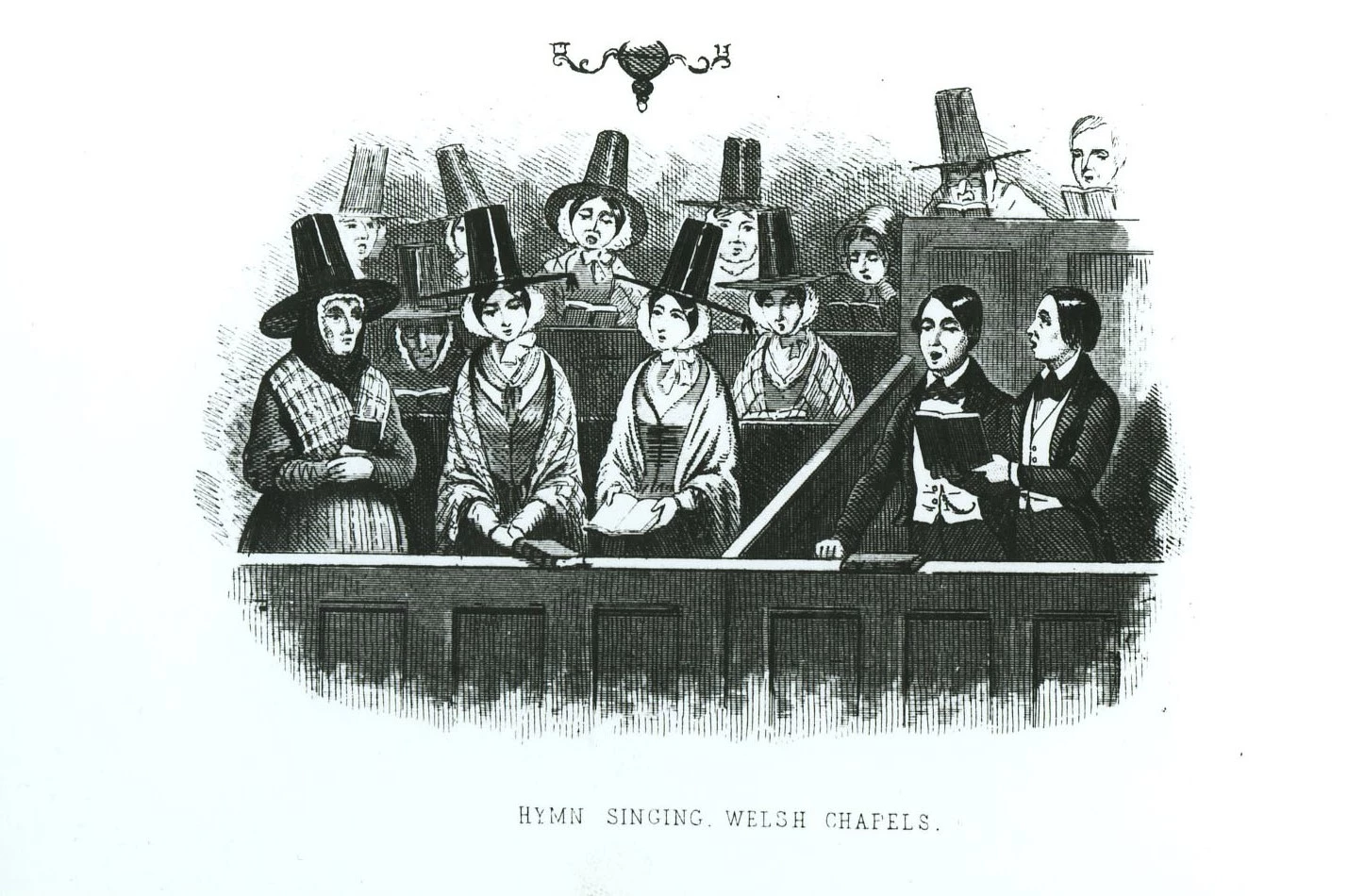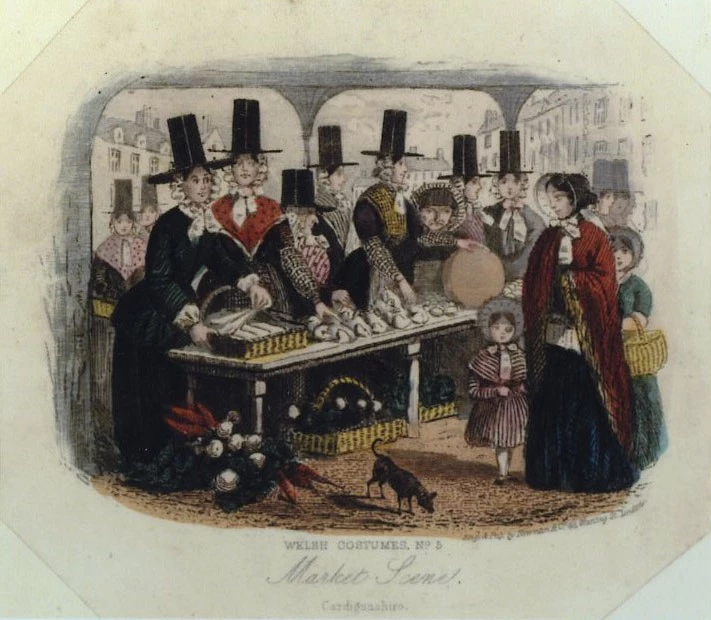Lluniau o Archif Amgueddfa Werin Cymru / Images from the St. Fagans Archive
, 1 March 2016
John Roberts, 'Telynor Cymru, from Newtown, 1816-1894
The Photographic Archive at St. Fagans: National History Museum has over 200,000 images in its collection and reflects Welsh Social and Cultural History. It documents people’s everyday life over the last few hundred years. The images capture the Welsh as they work, rest and play. The collection includes photographs from rural and industrial Wales of subjects such as: costume and dress; textiles; work and trades; domestic life; cultural life including music and sport; traditional craft; vernacular architecture; furniture and interiors. To celebrate St. David’s Day here are a few examples of the more steryotypical images from the collection! Dydd Gwyl Dewi Hapus I Bawb!
First Welsh Schoolboys team, 15 players and 12 officials, 1904.
















